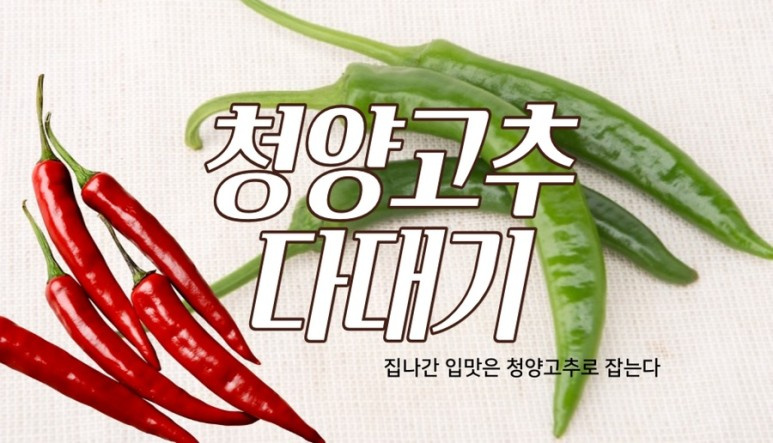Spicy Cheongyang Pepper and Anchovy Paste
Your Ultimate Appetizer: Make a Zesty Anchovy and Gochugaru Paste

This recipe uses precious Cheongyang peppers, gifted by a friend who grew them themselves. If you have an abundance of peppers, you can chop and freeze them. However, making a versatile pepper paste (also known as ‘gochujang daedagi’) is a fantastic way to create a long-lasting side dish with extended shelf life. It’s a win-win situation! This paste offers a delightful spicy kick from the peppers and a savory depth from the anchovies, making it a perfect accompaniment to any meal.
Main Ingredients- 200g Cheongyang peppers
- 70g Onion
- 50g Garlic
- 20g Dried anchovies (heads and guts removed)
Seasoning- 2 Tbsp Cooking oil
- 5 Tbsp Fish sauce (e.g., Kkanari anchovy sauce)
- 2 Tbsp Sugar
- 1 Tbsp Soy sauce (for soup)
- 2 Tbsp Cooking oil
- 5 Tbsp Fish sauce (e.g., Kkanari anchovy sauce)
- 2 Tbsp Sugar
- 1 Tbsp Soy sauce (for soup)
Cooking Instructions
Step 1
First, prepare all the main ingredients thoroughly. For the Cheongyang peppers (200g), remove the stems and wash them under running water. Peel the onion (70g) and garlic (50g) and rinse them. For the dried anchovies (20g), use ones meant for broth and remove their heads and the tough, dark inner parts. Preparing the ingredients meticulously will result in a more delicious paste.

Step 2
Now, we’ll process the prepared ingredients using a blender or an immersion blender. Place the Cheongyang peppers, onion, garlic, and the prepared anchovies into the blender. It’s a good idea to pulse the blender intermittently and check the consistency, as blending everything at once might result in an overly fine texture.

Step 3
Pause the blending process midway to check the texture of the ingredients. Adjusting the coarseness to your preference is key! I personally like to leave some small pieces intact for a bit of texture, so I stop blending before it becomes completely smooth. This texture adds to the overall eating experience.

Step 4
Next, we’ll blend the Cheongyang peppers separately. This step is done independently from the other ingredients blended earlier. Blending the peppers on their own will help to amplify their spicy flavor and aroma.

Step 5
When blending the Cheongyang peppers, it’s also best to aim for a slightly coarse texture rather than a completely smooth paste. This will enhance the flavor and aroma of the finished paste, adding a pleasant chewiness. Blend until you achieve a desirable consistency, avoiding a too-mushy texture.

Step 6
Now it’s time to cook the mixture. Get a pot ready and add all the blended ingredients – the ones blended together and the separately blended Cheongyang peppers. Place the pot over medium heat. It’s important to manage the heat to prevent the paste from burning.

Step 7
Begin stir-frying the ingredients over medium heat and add the seasonings one by one. Add 2 tablespoons of cooking oil to help the ingredients sauté nicely. Introduce the key umami element: 5 tablespoons of fish sauce. Then, add 2 tablespoons of sugar for a touch of sweetness and 1 tablespoon of soup soy sauce for added depth. Mix everything well.

Step 8
As you start stir-frying with the seasonings, the ingredients will release moisture, and the mixture will begin to bubble. This liquid will gradually reduce, allowing all the flavors to meld together and create a thick, paste-like consistency. Continue to cook over low heat, stirring occasionally, to deepen the flavors. Once the liquid has evaporated to your desired thickness, your delicious pepper paste is ready!




